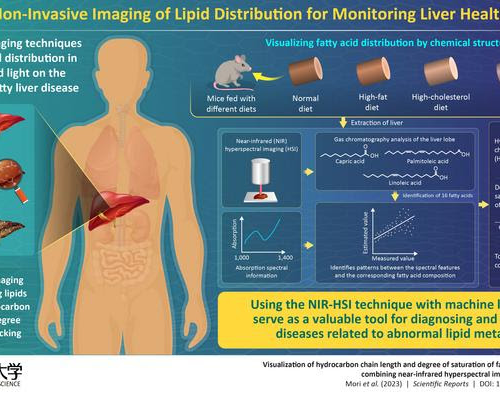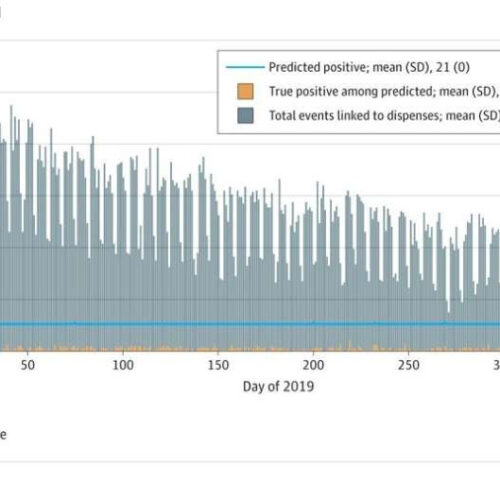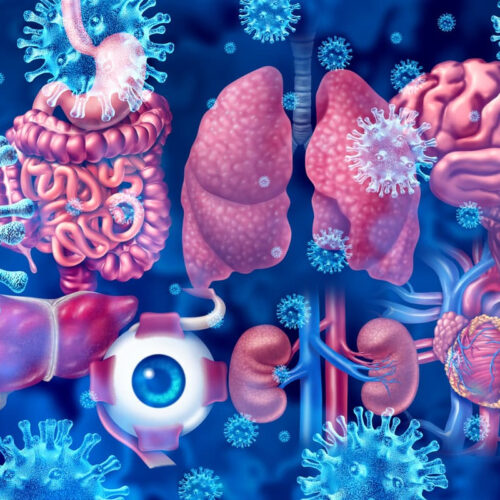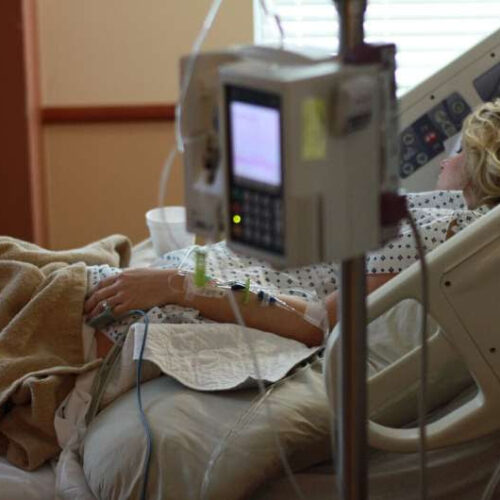September 4, 2024 by Michaela Martinez, Duke University A new tool to model peripheral nerve stimulation rapidly discovered optimal electrical waveforms (white traces) which, when delivered through the metal contacts of a cuff electrode placed on the vagus nerve, activates only therapeutic target fibers (in green) to avoid side effects. The optimization process involves testing...
Tag: <span>Machine learning</span>
Severe MS predicted using machine learning
Peer-Reviewed Publication LINKÖPING UNIVERSITY MIKA GUSTAFSSON, PROFESSOR OF BIOINFORMATICS AT THE DEPARTMENT OF PHYSICS, CHEMISTRY AND BIOLOGY AT LINKÖPING UNIVERSITY, SWEDEN. CREDIT: THOR BALKHED/LINKÖPING UNIVERSITY A combination of only 11 proteins can predict long-term disability outcomes in multiple sclerosis (MS) for different individuals. The identified proteins could be used to tailor treatments to the individual...
New study unveils machine learning-aided non-invasive imaging for rapid liver fat visualization
The proposed framework, which is label-free and rapid, can enable an early diagnosis, treatment, and prevention of liver diseases Peer-Reviewed Publication TOKYO UNIVERSITY OF SCIENCE IMAGE: BY COMBINING NEAR-INFRARED HYPERSPECTRAL IMAGING (NIR-HSI) WITH MACHINE LEARNING, RESEARCHERS FROM JAPAN SUCCESSFULLY VISUALIZED THE HYDROCARBON CHAIN LENGTH AND DEGREE OF SATURATION OF FATTY ACIDS IN MICE LIVERSCREDIT: MASAKAZU...
New machine learning technique found to be 30% better at predicting cancer cure rates
by University of Texas at Arlington Credit: Pixabay/CC0 Public DomainWith the rapid development in computing power over the past few decades, machine-learning (ML) techniques have become popular in medical settings as a way to predict survival rates and life expectancies among patients diagnosed with diseases such as cancer, heart disease, stroke, and more recently, COVID-19....
Migraine Clusters Emerge From Machine-Learning Analysis
Jim Kling June 22, 2023 AUSTIN, TEX. – A new machine-learning analysis of a large group of migraine patients has identified subgroups that share both clinical and therapeutic response traits. The findings could point to new therapeutic strategies, according to study author Ali Ezzati, MD. “A lot of diagnostic criteria that we have in the migraine world come from...
Using Machine Learning to Predict Rare Diseases
The POPDx model eliminates the need for large patient datasets, giving it the potential to help patients with uncommon diseases. Biobanks – databases with genetic and health information – allow researchers to explore illnesses and study the contributions of genetics and environment to disease trajectory. These investigations have enabled us to conclude factors ranging from the relationship...
Machine learning model helps doctors predict opioid prescription risk for patients
by Gillian Rutherford, University of Alberta Simulation of predicting the top 20 riskiest opioid dispensations measured daily by progressively excluding participants previously flagged as high risk. A, Top 20 riskiest dispensations. The solid blue line (what was predicted) represents a workload that the College of Physicians and Surgeons of Alberta (CPSA) would have to consider....
Four distinct subtypes of long COVID defined in machine learning study
By Rich Haridy January 08, 2023 Researchers are attempting to understand the risk factors that make different people more susceptible to various long COVID symptoms Depositphotos Using machine learning to track symptom clusters in around 35,000 COVID patients, researchers have identified four distinct types of long COVID. The findings suggest long COVID is a diverse disease with...
Machine learning enables an ‘almost perfect’ diagnosis of an elusive global killer
by Chan Zuckerberg Biohub Credit: Pixabay/CC0 Public Domain Sepsis, the overreaction of the immune system in response to an infection, causes an estimated 20% of deaths globally and as many as 20 to 50% of U.S. hospital deaths each year. Despite its prevalence and severity, however, the condition is difficult to diagnose and treat effectively....
Machine-learning method shows neurodegenerative disease can progress in newly identified patterns
by Lauren Hinkel, Massachusetts Institute of Technology Credit: Pixabay/CC0 Public Domain Neurodegenerative diseases—like amyotrophic lateral sclerosis (ALS, or Lou Gehrig’s disease), Alzheimer’s, and Parkinson’s—are complicated, chronic ailments that can present with a variety of symptoms, worsen at different rates, and have many underlying genetic and environmental causes, some of which are unknown. ALS, in particular,...







